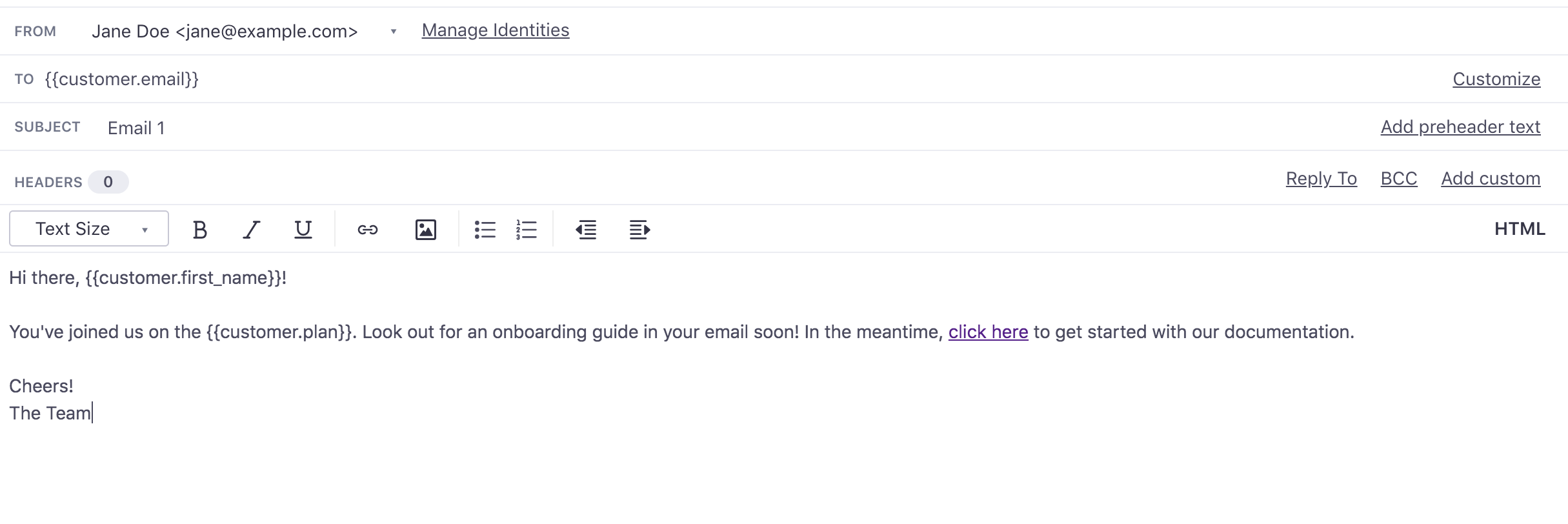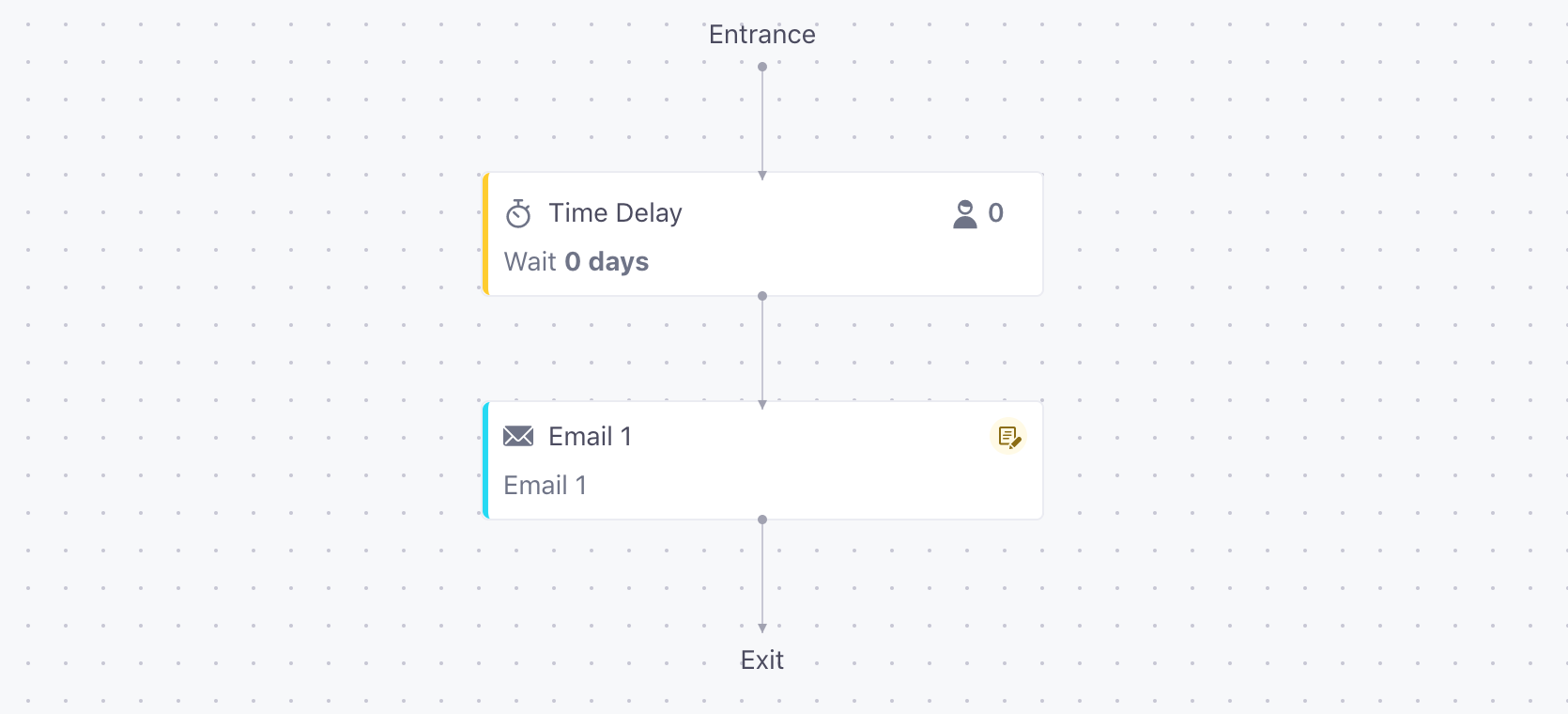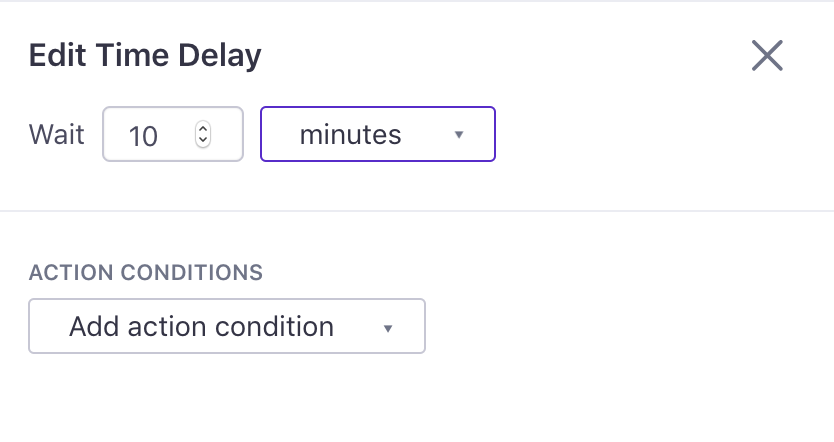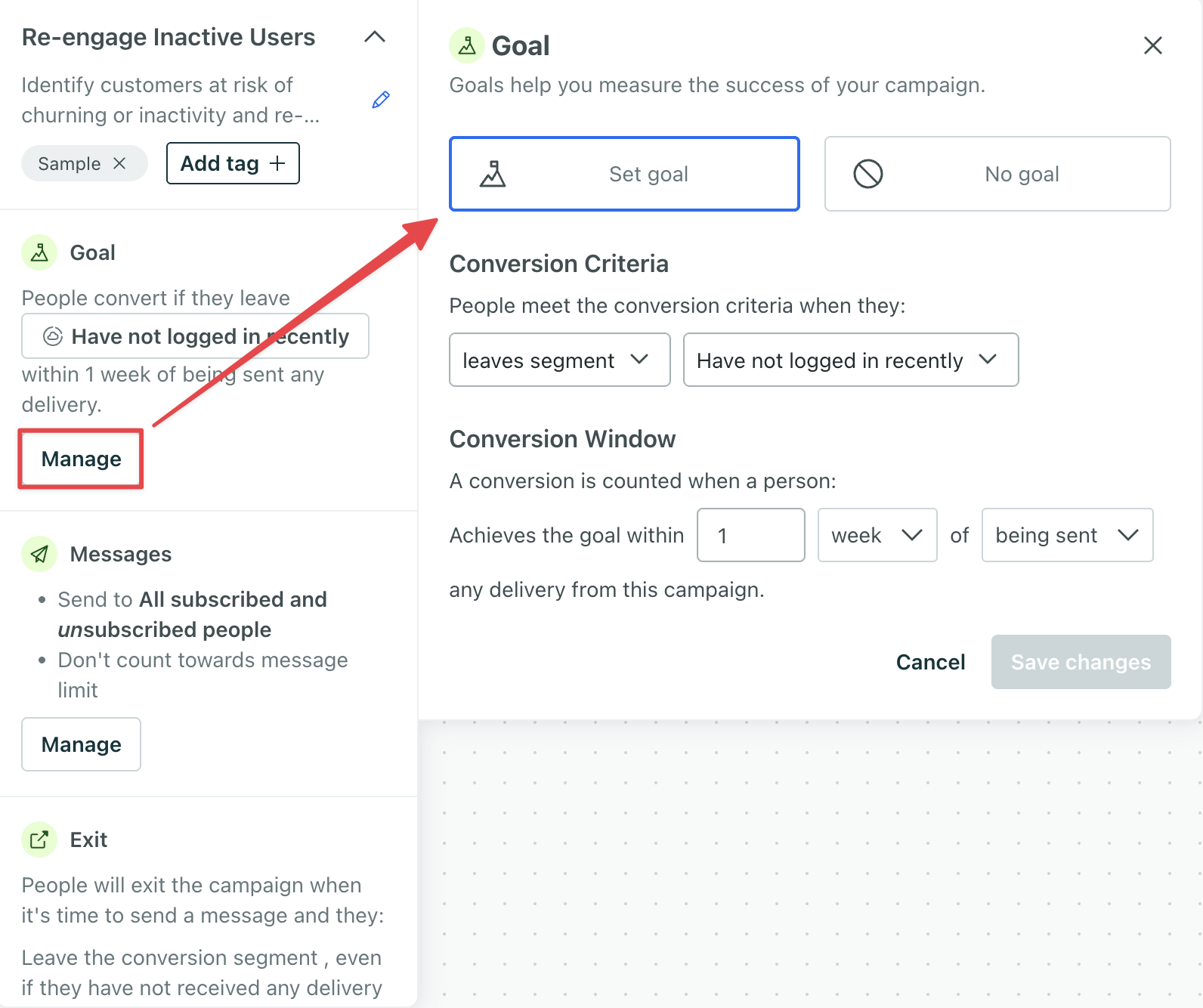Send a Welcome Email
UpdatedIntroduction
The way you make customers feel in the first few days after they’ve signed up for your site or service can influence their level of engagement with your company long-term. This moment of first impression is a crucial moment.
In this tutorial, we’ll walk you through creating your welcome email in Customer.io (and also assumes that you’ve completed your integration).
Ingredients
- Every customer in your Customer.io account must have a
created_atattributeA key-value pair that you associate with a person or an object—like a person’s name, the date they were created in your workspace, or a company’s billing date etc. Use attributes to target people and personalize messages. that is a timestamp
Method
Most of the time, you’ll want to send your welcome series to all new users who sign up for your product or service. In Customer.io, this takes a few simple steps.
Create your segment for new signups
By default, you’ll have a segment in your account called “Signed Up”, which includes all users with a created_at timestamp attribute. Check out this segment by heading to Segments in the navigation.
If you’ve deleted this segment, don’t worry-it’s easy to recreate. In the Segments section of the app, click on Create Segments, and enter your segment name. Now, the segment builder will probably have this default rule set up already:


Make sure the rule is looking for the attribute created_at is a timestamp and then hit Save Changes.
The timestamp you send to Customer.io should be a Unix style timestamp.
This is what your Signed Up segment should look like after saving:


Set up your campaign trigger
Now for the campaign! In the navigation, head to Campaigns, then click Create Campaign. Click Choose trigger then Segment change. Select the segment Signed Up:


Set up your welcome email
Add your email
Drag an email from the Build menu onto your workflow. Click the email to begin editing. Change the name so it’s purpose is clear to your teammates. Then click Add Content to start writing your email.


Write your welcome message
Fill in your message content, choose your email layout (rich text or code editors only), and review your email’s envelope - to/from fields, subject line, and more.
Personalize each email for your audience using liquid tags to add a customer’s name and otherwise tailor the content. In our example, we added our customer’s first name and plan details.


Don’t know what to say? We’ve got you covered. Here are some welcome copy templates you can adapt and use.
Preview with sample data
Search to find a user with the attributes specified in your liquid syntax so you can preview the message.
Edit your email’s behavior
Back on your workflow, click the email to review settings. By default, messages are set to Queue Draft, which means we’ll draft the email for your audience but wait for you to manually send them. If you want the email to send right away after you start your campaign, change this to Send Automatically.


Add your delay
Depending on your vision for your new customer experience, you may want to send your first welcome email right away, or give people some time to explore your product before you send your first message.
Let’s add a short delay before we send our welcome. In the workflow, click and drag a Time Delay just before the email:


For our example, we’ll set just a 10 minute delay before sending the welcome email. Click to edit the worfklow item, change the delay time, then save:


If you don’t want to add a delay, that’s it! Move onto the next step.
Optional: add conversion criteria
Next, you can set conversion criteria. This provides a way to track an action that you hope the new user will take after reading your message.


Conversion criteria mark messagesThe instance of a message sent to a person. When you set up a message, you determine an audience for your message. Each individual “send”—the version of a message sent to a single member of your audience—is a delivery. and journeysTypically, a person’s path through your campaign. If the campaign is triggered by a webhook, then a journey captures the webhook’s path, not a person’s. as converted when a person performs an event, joins a segment, or leaves a segment. Track conversions to see how many of your messages and journeys have the desired effect with your audience.
If you don’t want to set conversion criteria, click No goal.
Optional: change your exit conditions
In the case of this example, you can leave the Exit settings as they are by default. That is, a person will exit the campaign if it’s time to send them a message and they don’t match your triggers and filters.
Review and start your campaign!
Almost there! Review your welcome campaign and check to see if there are any errors or anything missing. If you have any steps to complete, you’ll see Review items at the top of your workflow. Otherwise, click Start Campaign to review.
Before you start your campaign, you must choose to either send your campaign to all people who ever signed up, or just new users who are signing up after the welcome campaign starts.


For welcome messages, you probably want to choose to send to Future matches only. Otherwise people who already exist in your system and signed up in the past will suddenly get a random welcome email once you set your campaign live.
Finally, click Start Campaign, and that’s it! If you’ve set your email’s sending behavior to draft to check how your campaign will run, remember to send the drafts and change the email sending behavior to “Send Automatically” when you’re ready. Once emails start sending, you can head to the campaign’s overview page to see how the campaign is performing.
Other considerations
We’ve covered a welcome campaign that is email-based, but there are many more ways that you can reach out to customers in their first few days after signing up. You may want to include a combination of emails, in-app messages, push notifications, SMS, Slack notifications, or all of the above.
Here’s a quick example of a multi-step welcome workflow, once a user signs up and enters the campaign:
- Wait 2 hours
- Send first email
- When the user has opened that first email, send the next one using Action Conditions
- Depending on an action they take in the second email, send them an SMS with a Twilio Action
- When the user receives the SMS, notify your sales team that they’ve reached this point in the funnel and need personal outreach Slack Action or Webhook to your CRM.
- After the sales team has been notified, update an attribute on the customer to indicate that they have been contacted by the sales team. Create or update person action
Wrap Up
Welcome emails are a win-win for both your company and your customers. If you have any questions about how to set up a welcome email series, please get in touch!

